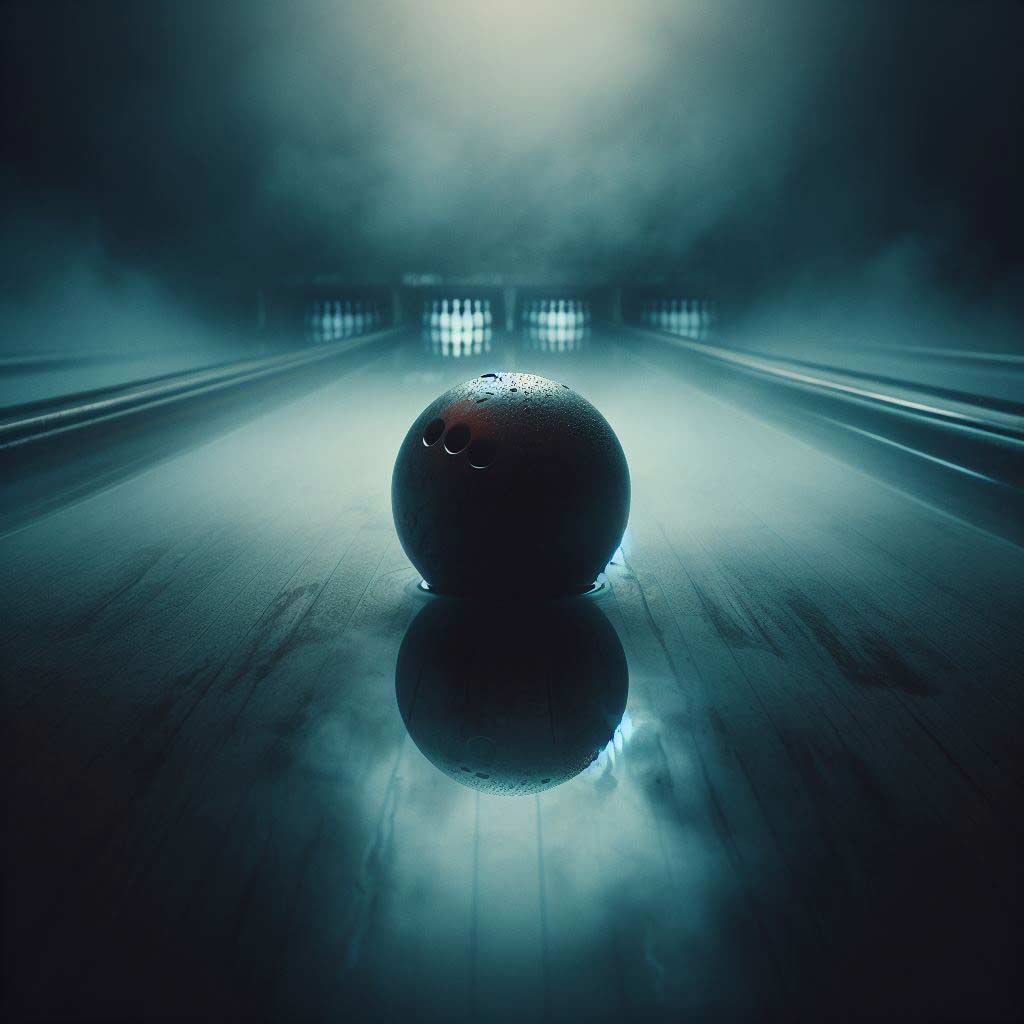As passionate bowlers, we invest a significant amount of time and money into acquiring the right bowling equipment. From the perfect ball weight and coverstock to the ideal drilling layout, we meticulously select and maintain our gear to ensure peak performance on the lanes. However, one critical factor that often gets overlooked is the temperature sensitivity of our bowling balls.
Many bowlers may not be aware of the specific temperature thresholds at which their beloved balls can become susceptible to cracking and damage.
This lack of knowledge can lead to costly equipment failures and disappointing outings on the lanes. In this comprehensive guide, we’ll dive deep into the science behind bowling ball cracking, explore the key factors that influence it, and provide practical tips to help you prevent this issue and extend the lifespan of your gear.
What Temperature Do Bowling Balls Crack?
To understand the temperature at which bowling balls can crack, we first need to examine the materials used in their construction. Modern bowling balls are typically made from one of three primary materials: polyester, urethane, or reactive resin.
Polyester balls, which were once the industry standard, tend to be the most sensitive to temperature fluctuations. These balls can become brittle and prone to cracking when exposed to temperatures below 40°F (4.4°C). The polyester material used in their manufacturing simply doesn’t have the same level of flexibility and impact resistance in colder conditions.
Urethane bowling balls, which have become increasingly popular in recent years, have a slightly higher tolerance for cold temperatures. However, they still run the risk of cracking when exposed to temperatures below 20°F (-6.7°C) for extended periods. The urethane compound used in these balls can start to lose its pliability and become more susceptible to damage at these low temperatures.
The latest generation of reactive resin balls, which feature advanced coverstock materials, tend to be the most resilient to temperature changes. These balls can generally withstand temperatures as low as 10°F (-12.2°C) without experiencing significant cracking or damage. The complex resin formulas used in their construction provide superior cold-weather performance.
It’s important to note that these temperature thresholds are general guidelines, and the actual cracking point for a specific bowling ball may vary based on its age, usage, and the manufacturer’s recommended care and storage guidelines. As a rule of thumb, it’s always best to err on the side of caution and avoid exposing your bowling equipment to extreme cold or rapid temperature fluctuations.
Factors That Influence Bowling Ball Cracking
While temperature is the primary driver of bowling ball cracking, there are several other factors that can contribute to this issue and increase the risk of equipment damage.
Rapid Temperature Changes
One of the most significant contributors to bowling ball cracking is sudden or rapid temperature changes. Exposing a ball that has been stored in a warm, climate-controlled environment to sudden, extreme cold can cause the material to contract and become brittle, leading to cracks and fractures.
Imagine taking a ball straight from your heated pro shop or bowling alley and immediately placing it in the trunk of your car on a frigid winter day. The sudden temperature drop can be enough to induce stress fractures in the ball’s surface, which can worsen over time and eventually lead to complete cracking or splitting.
Humidity and Moisture
In addition to temperature, the level of humidity and moisture in the surrounding environment can also play a role in bowling ball cracking. Balls that are exposed to high humidity or moisture, especially in cold conditions, can absorb that moisture, causing the material to swell and then contract as it dries out. This repeated expansion and contraction can put stress on the ball’s structure and lead to cracks.
Similarly, if a ball is subjected to sudden changes in humidity, such as going from a dry, air-conditioned bowling center to a humid outdoor environment, the resulting moisture absorption can contribute to cracking issues.
Age and Usage
As bowling balls age and see extensive use, they become more susceptible to cracking, regardless of temperature conditions. The constant impact of the ball against the lane, as well as the wear and tear from the oil and cleaners used to maintain the ball’s surface, can gradually weaken the material over time.
Older balls, especially those that have been heavily used or improperly cared for, are more likely to develop cracks, even when exposed to temperature ranges that wouldn’t typically cause issues for newer equipment. Proper ball maintenance and replacement at the first signs of damage can help mitigate this risk.
Manufacturer Recommendations
Finally, it’s essential to consider the specific temperature and care guidelines provided by the bowling ball manufacturer. Different brands and models may have slightly different tolerances and recommended storage conditions based on the materials and construction methods used.
Always refer to the manufacturer’s instructions for your particular ball and follow their recommendations to the letter. Disregarding these guidelines can significantly increase the chances of your ball cracking or sustaining other types of damage.
How to Prevent Bowling Ball Cracking
Now that we’ve explored the key factors that contribute to bowling ball cracking, let’s dive into some practical tips and strategies to help you prevent this issue and extend the lifespan of your equipment.
Gradual Temperature Acclimation
One of the most effective ways to prevent cracking is to avoid subjecting your bowling ball to sudden, extreme temperature changes. Instead, focus on gradually acclimating the ball to new temperature conditions.
For example, if you need to transport your ball from a warm, indoor environment to a colder outdoor setting, such as taking it to the bowling alley on a winter day, allow ample time for the ball to adjust.
Store it in your car or a temperature-controlled bag for at least 30 minutes before use, giving the material time to slowly adapt to the new conditions.
This gradual acclimation process helps reduce the stress and contraction that can lead to cracks and other types of damage. It may take a bit more planning, but it’s a crucial step in protecting your investment.
Climate-Controlled Storage
Whenever your bowling ball is not in use, make sure to store it in a climate-controlled environment. This means keeping it in a temperature-regulated space, such as your home, a pro shop, or a dedicated ball storage locker, rather than leaving it in your car or an uninsulated garage or shed.
Ideally, the storage temperature should be kept within the range of 60°F to 80°F (15.6°C to 26.7°C), with minimal fluctuations. This helps maintain the ball’s material integrity and prevents the type of rapid temperature changes that can lead to cracking.
Additionally, be mindful of humidity levels in your storage area. Aim for a relative humidity between 30% and 50%, as excessive moisture can also contribute to ball damage over time.
Avoid Extreme Temperature Exposure
In addition to gradual acclimation and climate-controlled storage, it’s essential to avoid exposing your bowling ball to extreme temperature conditions, even for short periods. This includes:
- Leaving the ball in a hot car during the summer months
- Storing the ball outdoors in freezing winter temperatures
- Placing the ball directly on ice or in a freezer
- Bringing the ball from a warm environment directly into severe cold
These types of sudden, extreme temperature changes can quickly induce stress on the ball’s material, leading to cracking, warping, or other types of permanent damage. If you must transport your ball in a vehicle, use insulated bags or containers to help maintain a more stable temperature.
Proper Ball Maintenance
Regular maintenance and care can also play a significant role in preventing bowling ball cracking. This includes:
- Cleaning the ball’s surface regularly with approved cleaners and polishes
- Applying a quality ball polish or surface treatment to protect the coverstock
- Avoiding the use of harsh chemicals or abrasives that could weaken the ball’s structure
- Inspecting the ball for any signs of damage, such as cracks, chips, or deformities
- Replacing the ball if any significant damage is discovered
By keeping your bowling equipment well-maintained and addressing any issues promptly, you can help mitigate the risk of temperature-related cracking and extend the lifespan of your gear.
Follow Manufacturer Guidelines
Finally, it’s crucial to always follow the specific care and storage recommendations provided by the bowling ball manufacturer. These guidelines are carefully developed based on the unique materials and construction methods used in each ball model.
Disregarding the manufacturer’s instructions, even in seemingly minor ways, can significantly increase the chances of your ball cracking or sustaining other types of damage. Take the time to review the documentation that came with your ball, and be sure to adhere to their recommended temperature ranges, humidity levels, and maintenance procedures.
Conclusion
Bowling ball cracking is a common issue that can lead to costly equipment failures and frustrating experiences on the lanes. By understanding the temperature thresholds at which balls made from different materials can become susceptible to damage, as well as the other factors that contribute to this problem, you can take proactive steps to protect your investment and maximize the lifespan of your gear.
Remember to gradually acclimate your bowling ball to temperature changes, store it in a climate-controlled environment, avoid exposing it to extreme conditions, maintain it with care, and always follow the manufacturer’s instructions.
By implementing these best practices, you can help prevent cracking and ensure your bowling balls continue to perform at their best, no matter the conditions.
So the next time you’re preparing for a big tournament or league night, take a moment to consider the temperature sensitivity of your equipment and make the necessary adjustments to keep your balls in top shape. With a little extra care and attention, you can enjoy many more unforgettable bowling moments with your trusted gear.





